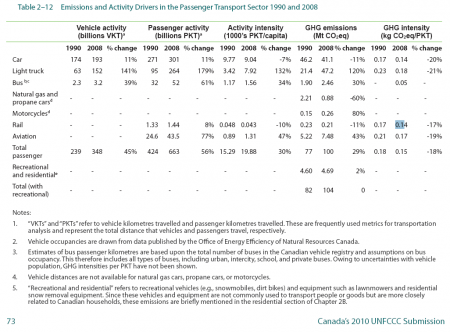There’s a reason this site is called “burycoal” (and it has nothing to do with how silly the word “bury” looks written down) – it’s easy to grasp that if climate has to do with the amount of carbon in the atmosphere, digging up all the carbon which the earth has buried over billions of years into solid black stuff might not be the best recipe for human survival. It’s immediately comprehensible that while burning down a tree while another is growing does not add to the overall amount of carbon in the atmosphere, digging a tree’s worth of coal out from underground and burning it does – or rather, perhaps we could say that the coal carbon-neutrality cycle is as long as the coal’s “renewable” cycle, which is qualitatively longer than that of trees.
However, there are limits to this over-simplifying way of thinking. For one, when you burn a tree you don’t just give off pure carbon dioxide but also soot, “black carbon” – and this has its own set of effects on climate. So your wood stove is not neutral (and you should replace it with an EPA certified unit, which are designed for cleaner combustion). For another, humans engage in all sorts of practices which turn chemicals into other chemicals, and this poorly thought out alchemy (with respect to the ecosystem at least) is a major contributor to global warming even if the processes are run using carbon-neutral energy.
The production of animal food products for human consumption, for instance, according to a UN Food and Agriculture report, contributes “37 percent of all human-induced methane.” Methane is a greenhouse gas 23 times as potent as CO2, but it is actually a mistake to simply equivocate it, 1 unit of methane to 23 units of CO2. It is also qualitatively different in that this major contributor of it is not a source of energy. We need energy to produce it, but its production itself, abstracted from the energy inputs, is a major source of methane. Animals are effectively global warming machines – they ingest carbon based food, and they output a global warming agent far more potent than went in. They re-assemble what was already in the climate (i.e. from whence their food? Out of the air!) into something which has a very different effect on the climate (23 times worse!).
In fact, according to the FAO report,
“the livestock sector generates more greenhouse gas emissions as measured in CO2 equivalent – 18 percent – than transport. It is also a major source of land and water degradation.”
More than transport. Think about this for a minute – all those trains, ships, trucks, automobiles, all that coal fired electricity running city trolleys and subways, all those airliners too.
Now, I’m not saying that shutting down meat production will be easy. But it seems naive to think that it would be more difficult (technically, politically) to shut down all meat production than to switch to carbon neutral transportation solutions. Now, of course I’m not making a exclusionary disjunctive claim here – we obviously need to do both. Heck, even Glenn Beck agrees with me on this one.
The point I want to make here, however, is not that you should go vegan (although I think everyone should seriously limit their meat intake – not one less meat meal per week, more like reduce meat meals per week to one, and reduce your consumption of dairy while you do more research and learn what you’re actually involving yourself in when you consume these things – ignorance is not a serious excuse). Rather, taking the environment seriously with respect to global warming means treating our ability to release greenhouse gases as a non-renewable resource. Think of it as a finite garbage dump, and when it overflows, we go Venus (this is a misleading analogy, since actual landfill space is not a world historical environmental problem). The production of animals is, in this frame, the same as coal – because it involves the consumption of a non-renewable resource. That non-renewable resource is not a “thing”, but rather the sensitivity of the climate, up to the point where we catastrophically steal from future generations.
So, the sense in which I want to say “coal” can be a metaphor for understanding our climate predicament is that there is a finite amount which we can modify and still sustain flourishing life. This modification can come from digging up the black stuff, or it can come from re-assembling the stuff the air into stuff that acts differently in the air – and this is what we do when we raise livestock. The non-renewability of a resource is not only in the fact it can not continue to be extracted, but also in the fact it can not continue to be emitted. The connection of these two thoughts is necessary to think rationally about the way in which humans interact and shift their eco-situation.





